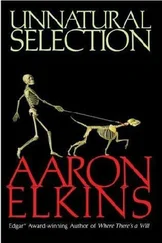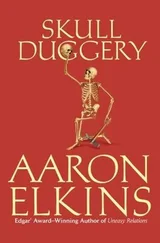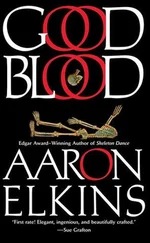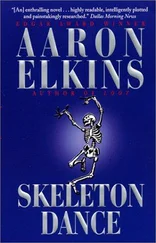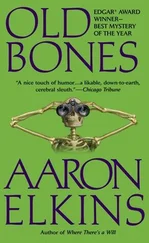Aaron Elkins - Old Scores
Здесь есть возможность читать онлайн «Aaron Elkins - Old Scores» весь текст электронной книги совершенно бесплатно (целиком полную версию без сокращений). В некоторых случаях можно слушать аудио, скачать через торрент в формате fb2 и присутствует краткое содержание. Жанр: Классический детектив, на английском языке. Описание произведения, (предисловие) а так же отзывы посетителей доступны на портале библиотеки ЛибКат.
- Название:Old Scores
- Автор:
- Жанр:
- Год:неизвестен
- ISBN:нет данных
- Рейтинг книги:4 / 5. Голосов: 1
-
Избранное:Добавить в избранное
- Отзывы:
-
Ваша оценка:
- 80
- 1
- 2
- 3
- 4
- 5
Old Scores: краткое содержание, описание и аннотация
Предлагаем к чтению аннотацию, описание, краткое содержание или предисловие (зависит от того, что написал сам автор книги «Old Scores»). Если вы не нашли необходимую информацию о книге — напишите в комментариях, мы постараемся отыскать её.
Old Scores — читать онлайн бесплатно полную книгу (весь текст) целиком
Ниже представлен текст книги, разбитый по страницам. Система сохранения места последней прочитанной страницы, позволяет с удобством читать онлайн бесплатно книгу «Old Scores», без необходимости каждый раз заново искать на чём Вы остановились. Поставьте закладку, и сможете в любой момент перейти на страницу, на которой закончили чтение.
Интервал:
Закладка:
I let the hubbub in the alcove die down a little, waited for a few people to come out, then took a breath and pushed around the corner. The painting leaped out at me, three feet from my face, brilliant and vivid from its recent cleaning, a handsome portrait of an elderly man. I peered at it, eyes narrowed, mind cleansed of everything else, focusing every ounce of concentration, everything I'd learned from fifteen years of scholarly absorption in Baroque art. I put the buzzing around me out of my mind. I scrutinized the brushwork, the palette, the thousand nuances of style and technique.
After a couple of minutes, I let out my breath and stepped back.
I didn't know whether the hell it was a Rembrandt or not.
Chapter 7
Well, it wasn't that simple. Not that it didn't look enough like a Rembrandt; the problem was, it looked too much like a Rembrandt-but it was the wrong Rembrandt. Not the wrong person, I mean, but the wrong style.
In the seventeenth century it had been a famous witticism that Rembrandt's paints were so thick that you could pick his portraits up by the nose. (His grumpy response had been that he was a painter, not some damned dyer.) Ever since, those clotted gobbets of color had been hallmarks of his work, along with the astonishingly free, incredibly sure brush strokes, the somber, reflective atmosphere, the pensive subjects emerging from dim, vague scrubs of shadow into pools of golden light.
When you hear the words "Rembrandt portrait," that's what comes to mind, right? Well, that's what I was expecting too. Reasonably enough. That's what every newly discovered Rembrandt portrait of the last fifty years had looked like, and every phony one too. That was the Rembrandt I'd spent three entire days boning up on.
But this was different, this was in the style of the artist's youth, before he'd become the Rembrandt most of us know, the most famous painter in the world. No fat globs of paint, no looping, spontaneous brushwork. This was early seventeenth-century Dutch painting-in effect, Dutch painting before the mature Rembrandt changed it forever-at its best: clean-lined, highly finished, crisply realistic. And that's what made it so intensely surprising.
Paradoxically, you see, it is the later, greater Rembrandt who is most frequently and most successfully faked. Many a second-rate painting has passed as a Rembrandt if the ochers, browns, and yellows have been slapped on gluily enough, the outlines adequately blurred, and the whole thing done with moody flair. But to imitate the precision of the early Rembrandt takes discipline, not to mention well-honed skills, and those have always been in shorter supply than flair.
So all the prepping I'd done involved Rembrandt's mature style. It had simply never occurred to me that I might be dealing with a spurious early Rembrandt. Naturally, I was thrown for a loop. Who wouldn't be?
And okay, all right, I admit it. Possibly I was-um, er-just a wee bit overconfident going in.
The picture before me was of a weathered, dissipated-looking man in his sixties, with a long nose and a scant, grizzled beard. He gazed sadly out from under a capacious black hat with an enormous plume held on by a glittery gold chain, and a dull-metal gorget over a black tunic. Seedy and stoic, and a little cunning too, his face was the kind you might see today in an inner-city grocery store at eight in the morning, picking over a grimy handful of dimes and quarters to make sure there was enough for a quart of tawny port.
Once believed to be Rembrandt's father, this particular old derelict shows up in at least a couple of dozen oils and etchings done around 1630, not only by Rembrandt, but by many of the Leiden painters, trumped up in sham finery of one kind or another-turbans and fancy helmets, caftans and pseudo-Biblical armor. In this one, according to the white title card beside the picture, he was supposed to be Un Officier -a military officer.
As always, he was grave, introspective, and vaguely dazed by all the frippery. Rembrandt had put him in so many pictures that I'd never gotten them all straight. And I'd forgotten which of them had fallen into the "doubtful" category over the years, and which were still believed to be by Rembrandt. They vary hugely in quality, from clumsy sketches to highly finished pieces. And this one, which I didn't remember having seen in the standard catalogue raisonne of Rembrandt's works, seemed to me to be right up there with the best of them.
Was it possible that I was really looking at a Rembrandt, then? An unknown Rembrandt? Could something like this have survived unrecognized for almost four hundred years? I realized with a shock that I was half-convinced, maybe more. If Vachey hadn't laid down his prohibition on testing, then I think I might have been wholly convinced.
No, not quite. Those earlier, unsettling "philosophical" remarks of his about forgery and art kept flitting through my mind, which didn't do anything to ease it. Nor did his sticking it to poor Froger earlier, not that Froger didn't have it coming. I couldn't see where I or SAM had it coming, but who could tell with a quirky guy like Vachey?
The thing was, just because it was good enough to be a Rembrandt, that didn't make it a Rembrandt. At the very top of their form, some of his finest contemporaries or best students might conceivably have done something as good as this too. Gerrit Dou, say, or Rembrandt's own teacher Pieter Lastman.
Searching for the signature, I found a simple monogram near the top right margin, where the dull, stony green of the background lightened to an oily yellow: RHL, with no date. That would stand for Rembrandt Harmenszoon Leidensis, which was the way he signed his paintings in the early 1630s, while he was working in Leiden. It was not until 1633 that the name "Rembrandt" first appears on his paintings in the artist's elegant, familiar script.
So the use of the youthful monogram was right on target; there was nothing about it to make me doubt. On the other hand, there wasn't anything there to make me believe, either.
The problem was that the first thing a crook does when he wants to push some handsome old painting by a lesser-known artist as a handsome old painting by a famous Old Master is to get rid of the original signature and put on a false one. All such fakes have signatures. Without them, they have an almost unwinnable battle to be accepted as anything better than "School of X," and crooks don't go to all this trouble to settle for that.
No matter if the painter in question didn't usually sign his name, or if the forger had no idea what the artist's signature looked like. There are, for example, pictures in several private collections, and even one that used to be in a museum, that bear the proud signature El Greco -despite the established fact that the painter invariably signed his pictures with his real name, Domenikos Theotokopoulos. In Greek.
So I didn't know anything that I didn't know before.
By now, the noise, heat, and jostling of the mob in the alcove had started to get to me. I made my way out and back into the reception area, my mind bouncing all over the place. That painting was going to need more study, the back as well as the front, and I couldn't very well do it in that crush. Or even if I could, I didn't want to. Tomorrow I'd have it to myself, and have all the time I wanted with it.
I'd gotten a well-deserved comeuppance in there, and I was no longer sure about being able to carry out the task I'd come for. What did I do if, as Calvin had so happily and repeatedly posited, I looked at it all day and the day after that, and then some, and still didn't know if it was genuine or not? Having seen it, however, at least I knew we weren't being flummoxed with some preposterous fraud. If it was a fake, it was a dandy.
Читать дальшеИнтервал:
Закладка:
Похожие книги на «Old Scores»
Представляем Вашему вниманию похожие книги на «Old Scores» списком для выбора. Мы отобрали схожую по названию и смыслу литературу в надежде предоставить читателям больше вариантов отыскать новые, интересные, ещё непрочитанные произведения.
Обсуждение, отзывы о книге «Old Scores» и просто собственные мнения читателей. Оставьте ваши комментарии, напишите, что Вы думаете о произведении, его смысле или главных героях. Укажите что конкретно понравилось, а что нет, и почему Вы так считаете.


